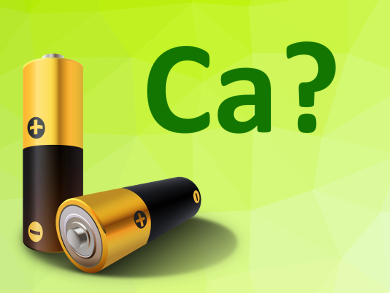Lithium-ion batteries are commonly used but have limited potential for further development. Using multivalent metals such as Mg or Ca could improve battery capacities. However, compared with Li, it is much more difficult to find electrode materials that can reversibly take up and release these metal ions. So far, there has been no proof-of-concept for a reversible Ca battery.
Carlos Frontera, M. Rosa Palacín, Institut de Ciència de Materials de Barcelona (ICMAB-CSIC), Spain, and colleagues have, for the first time, achieved the electrochemical oxidation of a transition metal oxide through calcium extraction. This process could provide a way towards a proof-of-concept calcium battery.
The team used a 1D material to improve cation movement along the chains, namely, 1D-Ca3Co2O6, and prepared electrodes by combining this compound with carbon black and polyvinylidene fluoride (PVDF). As an electrolyte, the team used Ca(BF4)2 dissolved in a mixture of ethylene carbonate and propylene carbonate.
The researchers found that Ca2+ ions can be extracted from 1D-Ca3Co2O6 in electrochemical experiments and that this redox process is partially reversible. According to the team, these results could help with the development of other 1D electrode materials for batteries based on multivalent metals.
- Electrochemical calcium extraction from 1D-Ca3Co2O6,
Deyana Tchitchekova, Carlos Frontera, Alexandre Ponrouch, Christopher Krich, Fanny Bardé, M. Rosa Palacín,
Dalton Trans. 2018.
https://doi.org/10.1039/c8dt01754a



